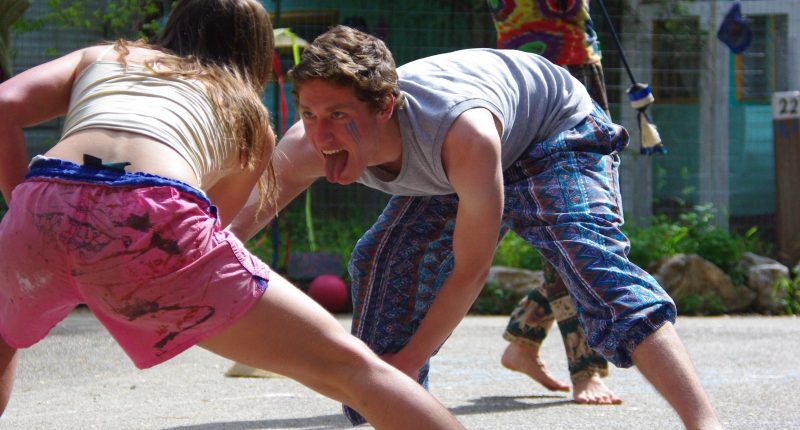Although it hasn’t taken off as quickly as other extreme sports, finger jousting is on the rise in Dallas, Houston and elsewhere in Texas. Individuals can often be found finger jousting in living rooms and open air malls throughout the state and around the country.
Finger jousting begins when two participants clasp their right hands together, with the index finger extended. The object of the joust is to attempt to poke the other individual anywhere but the right arm. Individuals may move in any direction as long as their hands remain clamped together, and they may not use their left arms or either of their legs in an offensive fashion. Players can vary the scoring, but players usually play to a set score.
The length of a finger jousting match can range from a few seconds for beginners to a few hours for two evenly matched, well-trained opponents. Players begin by showing a sign of respect, which can include a handshake, bow, or hug, then they interlock their right hands. When both index fingers are extended, the match officially begins. A player then tries to poke the opponent with his or her own index finger before the opponent can do the same. Different offensive and defensive moves can be performed to gain an advantage during the match. Matches are played for a desired prize, usually honor and/or spoils. The preset prize is awarded to the victor following his or her victory. Each round of a finger jousting match ends after one minute. The round may also end when a point is scored or a foul is committed. After each round, there’s short break, usually thirty seconds. There are several variations for scoring:
One point is scored each time a player pokes his or her opponent. This format is usually played to an odd number of points (best of three, best of five, etc.). In this format, a player receives a warning for one foul; two fouls result in a subtraction of one point, and three fouls result in disqualification.
Point play rules are similar to quick play rules, except that different parts of the body are worth a different amount of points. The left arm and legs are worth one point, the chest and central body are worth two, and the head is worth three. Point Play Matches are usually determined by the winner attaining six points.
There are some moves which, if performed during a match, result in a penalty. The punishment for a penalty usually changes, depending on the type of scoring method the opponents have agreed upon.
-Using a left arm, or either leg, as an offensive weapon
-Letting go of your opponent’s hand
-Curb stomping, smoke tagging, whipping, or generally beating your opponent after you win a round
-Biting
-Any action that compromises your own or your opponent’s integrity, including, but not limited to, intentionally aiming for your opponent’s groin.
The origin of finger jousting is hazy. Some historians believe the sport was founded by the ancient Israelites, who referred to it as finger spearing. There are references to finger spearing contained in the Book of Phalanges, an apocryphal manuscript that was excluded in the Bible at the Council of Nicaea, held during the late 10th century. Most finger jousting historians, however, agree that finger jousting developed its modern form during the 1970s.
The biggest event in the modern history of finger jousting was the World Finger Jousting Federation’s founding on August 1, 2005.
Found in the World Finger Jousting Federation’s Code of Conduct:
Respect – Always honor the outcome of a match. Without personal integrity, the WFJF would cease to exist. Respect also includes not intentionally aiming for the groin.
Decorum – Do not use profane or lewd speech before, during, or after the match. Remember every time a member jousts, he/she is acting as an ambassador of the WFJF.
Non-disturbance – Avoid disquieting surrounding bystanders and inanimate objects while leisure jousting. Do not engage in finger jousting matches at inappropriate settings or during inappropriate times.
Manicure – Taking care of your fingernails is a sign of respect for your opponent and shows an interest in maintaining a healthy body.
It may seem like a silly extreme sport, but serious finger jousters put themselves through a physically demanding regime to stay on top.
Stay Connected